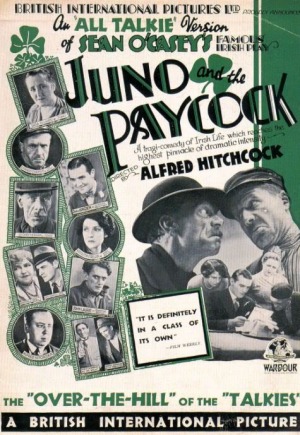 The Hitchcock Files is a continual feature at The Kuleshov Effect. In these posts, I take a detailed and chronological look at the filmography of Alfred Hitchcock. It should be noted that this series does not include his early silent films, though these are noteworthy in their own right.
The Hitchcock Files is a continual feature at The Kuleshov Effect. In these posts, I take a detailed and chronological look at the filmography of Alfred Hitchcock. It should be noted that this series does not include his early silent films, though these are noteworthy in their own right.
“All religions is passin' away. Take the real Dublin people, for instance. They know more about Charlie Chaplin and Tommy Mix than they do about S.S. Peter an' Paul.” –Juno and the Paycock
With the advent of sound and the unparalleled success of Blackmail, it’s no surprise that Hitchcock’s follow-up film was entirely a talkie. There would be no silent version. Sound was the biggest thing to hit cinema since the invention of the movie camera, and the studios were gung ho on using it as much as possible. Unfortunately, the technology at this point had still not been perfected, and the decision to use it in a film adaptation of the play Juno and the Paycock was probably not the best choice. The final product just goes to show that even with a master like Hitch at the helm, when the audio quality of dialogue is lacking (not to mention the heavy Irish accents), less is probably more.
Based on a play by Sean O’Casey, the film follows the Boyle family during Ireland’s civil war. The patriarch, Captain Boyle (Edward Chapman), is a lazy drunk who’d rather spend time squandering their meager finances in the pub with his friend Joxer than put in a hard day’s work. It’s up to his wife Juno (Sara Allgood) to make enough for them, their daughter Mary and their crippled son Johnny to survive. When Mary is courted by a wealthy benefactor who promises them a sizeable inheritance, the Captain quickly borrows money and spends it on extravagant living. Eventually it’s revealed that there will be no inheritance, Mary is pregnant out of wedlock, and Johnny has been killed by the IRA.
